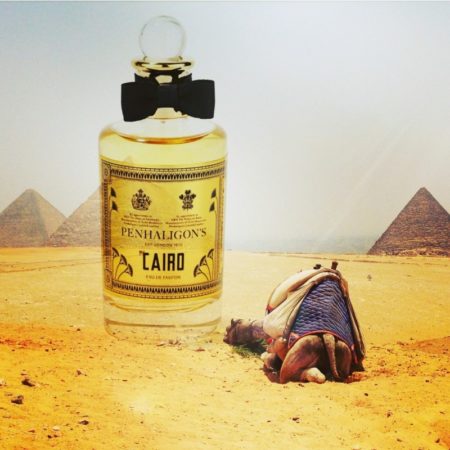
“Perfume Mirage" (Digital collage & effects: Despina Veneti)©
“
You are not rich in myrrh or in any kind of incense.
But I am the lord of Punt, and myrrh is my very own."
(Excerpt from the ancient Egyptian prose tale “The tale of the shipwrecked sailor")
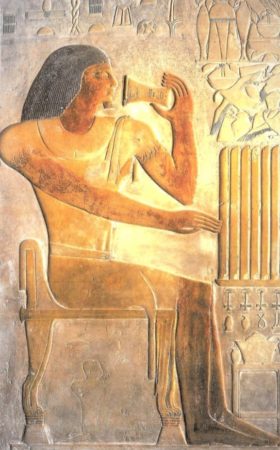
Ptahhotep sniffing a perfume jar in front of an offering table (From De Fabianis & Bourbon’s “The Great Book of Archaeology”)©
The role of fragrance in ancient Egyptian society was extremely important and varied: ordinary scented oils were commonly used (both for their aroma, and as means of skin protection from the sun and wind), while more luxurious perfumes (basically plant essences combined with oils and fats) made of expensive, rare and/or imported ingredients were affordable only to the rich. The Egyptian deities (most notably Nefertem, Hathor and Shesmu) were imagined as fragrant beings imbued with the “divine essence" (perfume was, after all, called “the fragrance of gods"); fragrant offerings to the gods were therefore commonplace, while the “seven sacred oils”, placed in tombs, were considered a way to ensure the physical and spiritual power of the deceased for resurrection.
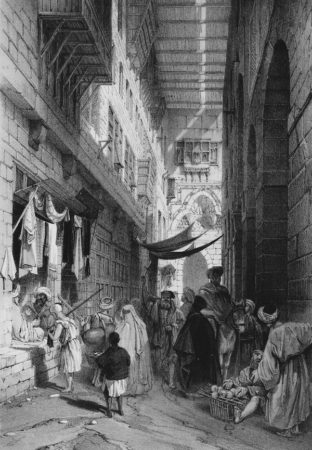
The Khan el-Khalili bazaar in Cairo (Illustration by Robert Hay, 1840)©
This deeply-rooted perfume culture of the ancient Egyptians was often the initiative behind some of their greatest expeditions – to the legendary “land of Punt” (whose geographic location is presumed to have been somewhere in the sub-Saharan Africa), but also to Arabia, the Mediterranean and the Aegean Sea – since there were hardly any indigenous sources of some of their cherished perfume ingredients (like the aromatic gum-resins used for incense). Later on, reaching a peak during the Ptolemaic period, the Egyptians used the well-established trade routes of the time to export their famed exotic perfumes all around the Mediterranean, even to Rome.

Christophe Raynaud of Firmenich©
Penhaligon's Cairo is the seventh fragrance of the brand’s Trade Routes Collection, an olfactory tribute to the exotic ingredients that were arriving into the 19th century London docks. Initially a Harrods exclusive, Cairo (the second scent of the collection that is inspired by Egypt, after the wonderfully breezy Oud de Nil) is a charming spicy/oudy rose oriental with a deep vanilla/patchouli base, created by Christophe Raynaud of Firmenich.

“Desert Rose" (Digital collage & effects: Despina Veneti)©
A complex, sumptuous composition, Penhaligon's Cairo opens with a big, spicy, woody rose Damascena. This is a rich but not sweet rose, with an aromatic profile of dry red wine, that reminded me of an ancient Egyptian perfume-making method which involved macerating spices and resins in fragrant wine. Cairo's fantasy “desert rose" feels exactly like it's been infused in a plethora of Middle Eastern aromatic treasures. Although oud is not among the listed notes, there's definitely an intense “oudy” character; either it is indeed part of the formula, or this could be the effect of an oud accord, a facsimile, resulting from the combination of labdanum, cypriol, incense and precious woods.
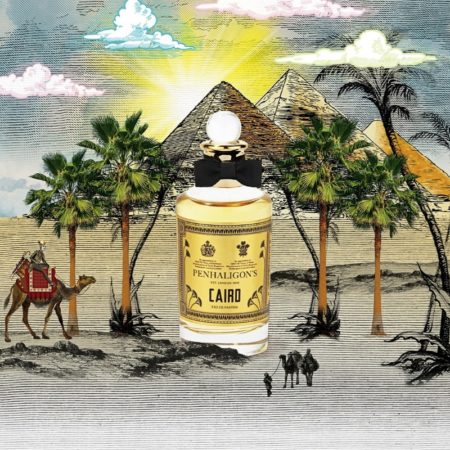
Penhaligon's Cairo (Courtesy of Penhaligon's)©
Thanks to the highly unstable Parisian climate this week, I've had the chance to discover that Penhaligon’s Cairo is a highly versatile, chameleon-like fragrance, whose character impressively changed depending on the weather and humidity of each day I wore it. At times warm/spicy, bittersweet/leathery or minty/oudy, the scent could also be described as balsamic, medicinal, rosy or smokey, depending on the wearer, the season, the climate… As for its long drydown (Cairo has moderate sillage, but very good longevity), the vanilla provides a most welcome sensual sweetness, the sandalwood creaminess and the patchouli a darker, deeper sensation.
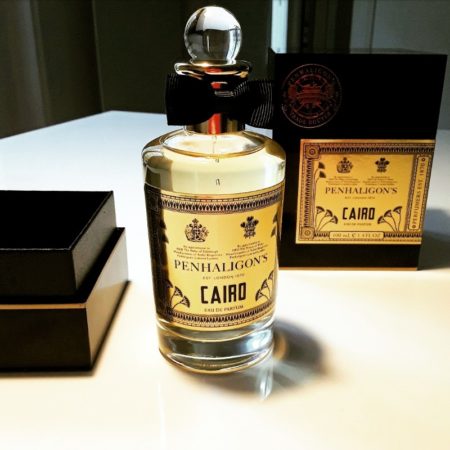
Penhaligon's Cairo (Photo by Despina Veneti)©
Intriguing, mysterious and restless, the “desert rose" of Penhaligon's Cairo opens radiant and energetic, and dries down sweet and sensual, evoking the dawn and dusk in the “City of a thousand minarets”.
Notes: Damascan Rose, Saffron, Incense, Labdanum, Cypriol, Vanilla, Sri Lankan Sandalwood, Atlas Cedarwood, Patchouli.
Note: The historical information included above are a result of studying Sheila Ann Byl's extraordinary work “The Essence and Use of Perfume in Ancient Egypt” (submitted to the University of South Africa for her Master of Arts Degree).
Disclaimer: I'd like to thank Penhaligon's for my bottle of Cairo. The opinions are my own.
– Despina Veneti, Senior Editor
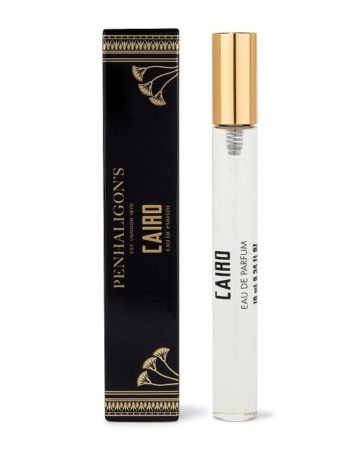
Penhaligon's Cairo travel spray (Courtesy of Penhaligon's)©
Thanks to the generosity of Penhaligon's, we have a draw for a 10ml travel spray of Penhaligon's Cairo for one registered reader in EU or USA. You must register here or your comment will not count. To be eligible, please leave a comment saying what you enjoyed most about Despina’s review, if you have a favorite from Penhaligon's Trade Routes Collection or any of their fragrances, and where you live. Draw closes May 4, 2019.
Follow us on Instagram: @cafleurebon @despinavnt @penhaligons_london
We announce the winners only on our site and on our Facebook page, so like Çafleurebon and use our blog feed… or your dream prize will be just spilled perfume.
